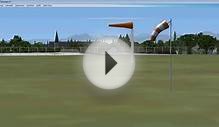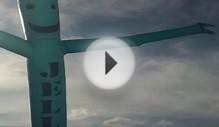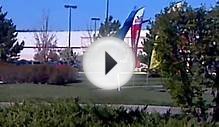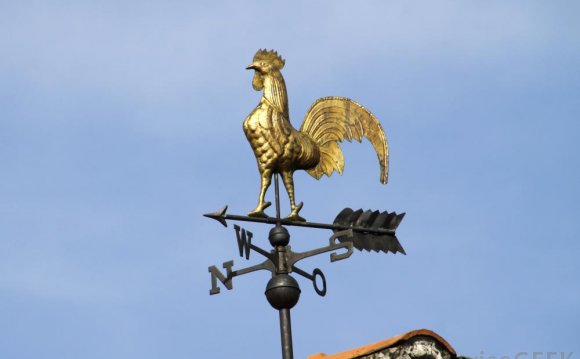
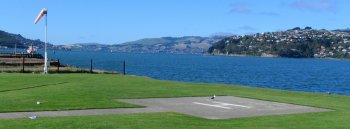 What is a windsock? Essentially, windsock(s) give an instantaneous visual clue of the immediate wind environment on location.
What is a windsock? Essentially, windsock(s) give an instantaneous visual clue of the immediate wind environment on location.
One of the most common searches on google with regards to windsocks is "what is a windsock?". In this post I will try to answer this question; and provide some insight to what windsocks are used for today.
Windsocks are essentially funnels for the wind. As the air passes through the tapered sock it's velocity increases; causing the sock to fill or inflate. As this is happening the windsock naturally aligns itself to the direction of air flow ie the wind direction. This is the main purpose of windsocks: wind direction indicators.
Why a windsock?
One of the major advantages of a windsock is that they react to even the slightest change in wind direction.
A windsock is usually mounted on a pole and then attached to a frame; or hoop. The hoop holds the mouth of the windsock open. This allows wind to enter the windsock at all time, even in the lightest of breezes. In this situation a flag would barely move, whereas a windsock will align itself every time.
Other Benefits
Windsocks are generally made from highly visible orange fabric; making them easy to spot from a distance or from the air. As such they are used extensively at airports for a local reference of wind speed and direction for pilots.
Windsocks are also used for Health & Safety purposes on factory sites, oil & gas rigs, and chemical storage units. In the case of an emergency, where employees have to evacuate, a windsock provides a quick, easily read signal as to where the wind is coming from; and which way the potentially harmful fumes or chemicals are travelling. This enables evacuating staff to determine what the safest route to safety is.
Windsocks can also be used as an informal anemometer. They are designed to inflate to different degrees depending on the local wind velocity.
Orange and white striped windsocks can be found on small airstrips around the world; where accurate local weather forecasting is not available. The windsocks clearly show approaching pilots the local average wind velocity, gust factor, and direction change. There are usually three windsocks per runway to give the pilot a complete picture of the conditions along the runway.
How to make a Windsock
Although they may look simple; windsocks are carefully designed to perform their role in different wind conditions; and require precision, experience, and quality materials to be manufactured correctly.
At McWilliam Windsocks we use computer aided design software to design each of our windsocks. This allows us to produce standard designs for different purposes, but also allows us to replicate specific windsocks for our clients with their own unique frames.
Our plotting table is used to cut our windsocks. This enables us to reliably make exact copies of windsocks over and over again. This is crucial for maintaining our high level of product quality. Should a customer order five windsocks or five hundred; they will all be the exact same.
YOU MIGHT ALSO LIKE
